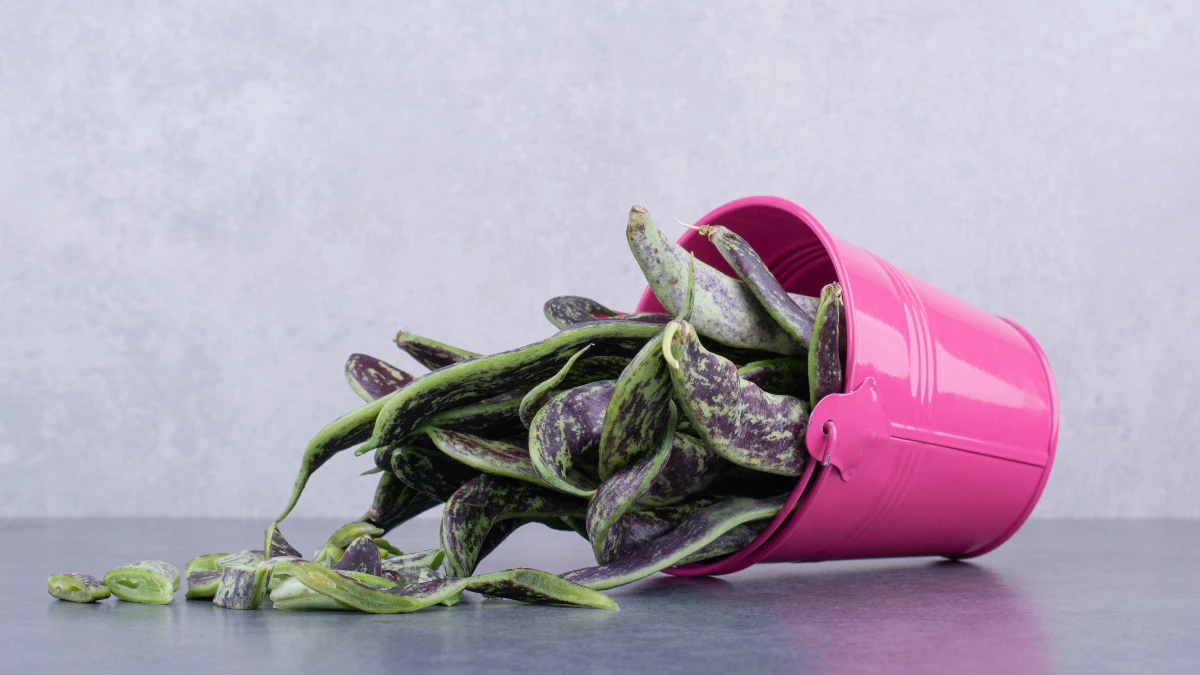If your fiddle leaf looks tired, your pothos is crisping, and your calathea has the crunchy tips—there’s a reason. Most plant losses trace back to a few, totally fixable issues: water (too much or too little), light, potting mix, indoor climate, and uninvited pests. Overwatering houseplants is the most common killer; low light is a close partner in crime because it slows growth and water use.
In this guide, you’ll learn why your plants are dying and how to revive a dying plant with measurable targets you can act on today: light in foot-candles, temperature and humidity ranges, exactly how to leach salts, when to repot, and safe, effective pest treatments.
Quick definitions you’ll use throughout: the University of Maryland Extension defines low light as roughly 25–100 foot-candles (fc), medium as 100–500 fc, and high as 500–1000 fc—numbers you can check with a phone light app or meter. And because homes are perfect habitat for certain pests, we’ll call out simple controls for fungus gnats and spider mites you can implement right away. Let’s turn confusion into a repeatable care routine—so your plants start growing again instead of merely surviving.
Overwatering & Poor Drainage: Root Rot Wins
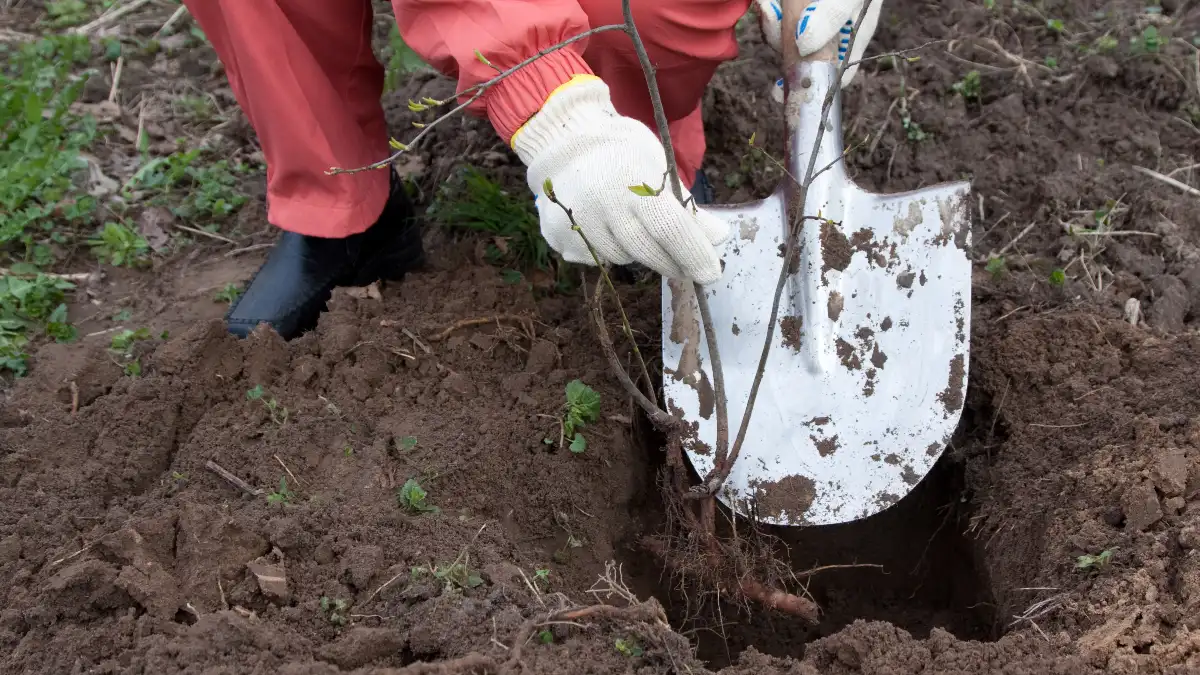
Stop Root Rot Before It Starts
Actionable checks and science-backed pointers you can use in 60 seconds—without repeating what’s already in the article.
One fact to remember
Overwatering is the leading cause of houseplant death (South Dakota State University Extension). Empty saucers and insist on real drainage holes—every time. :contentReference[oaicite:0]{index=0}
60-second drainage audit
Lift the pot: **heavy + wilt** often signals saturated, low-oxygen media—don’t water.
Peek under the nursery pot: confirm **open drainage holes** (no plastic film or roots plugging them).
Check the saucer/cachepot: if there’s pooled water, **dump it within 10 minutes** of watering.
Sniff the mix: **sour/eggy odor** suggests stagnant, anaerobic conditions—refresh the potting mix soon (RHS explains the smell link to anaerobic microbes). :contentReference[oaicite:1]{index=1}
Root health quick-key
| Status | Look & Feel | What it means |
|---|---|---|
| Healthy | Firm, white/cream; snaps cleanly | Roots respiring; media has air space |
| Rotted | Brown/black, mushy; outer layer sloughs | Likely root rot organisms active (e.g., Pythium, Phytophthora, Rhizoctonia, Fusarium) per Wisconsin Extension. :contentReference[oaicite:2]{index=2} |
Tip: Trim rot, repot into fresh, well-draining mix, and size the container sensibly.
Why soggy soil suffocates roots
RHS notes waterlogging **limits oxygen supply** and invites decay organisms; plants may even **wilt in waterlogged soil** because roots can’t move water without oxygen. :contentReference[oaicite:3]{index=3}
Do
- Use pots with **real drainage holes** (never rely on gravel).
- Water deeply, then **empty the saucer**.
- Match watering to **light levels**—less light = slower use.
Don’t
- Add **gravel** at the bottom—WSU shows it **worsens** drainage by raising the perched water table. :contentReference[oaicite:4]{index=4}
- Let decorative cachepots **hold** runoff around the grow pot.
- Ignore odors or constant moisture—repot before rot spreads.
“Too much water is the main reason most houseplants die.”
— South Dakota State University Extension. :contentReference[oaicite:5]{index=5}
The tell-tale pattern: yellowing leaves, a plant that wilts despite wet soil, and sometimes a sour, swampy smell. That’s not “thirst”—it’s stress from low oxygen around the roots. Never let pots sit in water. Water thoroughly until you see runoff, then empty the saucer. Use containers with drainage holes only; decorative cachepots are fine if the grow pot drains freely and doesn’t sit in pooled water. Extension educators routinely note that too much water is the main reason most houseplants die, so start your audit here.
What’s happening below the soil line: in saturated media, pores that should hold air fill with water. Roots can’t respire, so they shut down, and opportunists move in. Root-rot organisms such as Pythium, Phytophthora, Rhizoctonia, and Fusarium flourish in chronically wet conditions. Once roots are brown and mushy, you’ll often see the top wilt because the plant can’t move water—even though the pot is wet.
Tip the plant from its pot and inspect. Healthy roots are firm and cream-to-white; rotted roots are brown/black and slough when tugged. 2) Trim rot, repot into fresh, well-draining mix, and size the container sensibly (snug is safer than oversized). 3) Water once to settle, then let the top 2–5 cm dry before the next watering. 4) Keep the plant in appropriate light (see next sections); in low light, water less often because use is slower.
Why drainage holes matter (and saucers don’t help): waterlogged conditions deplete oxygen, increasing rot risk and reducing nutrient uptake. Even brief waterlogging events can spiral if your media holds too much water or the pot lacks an escape path. Make “drainage holes + empty saucer” a non-negotiable rule.
Underwatering or Hydrophobic Soil
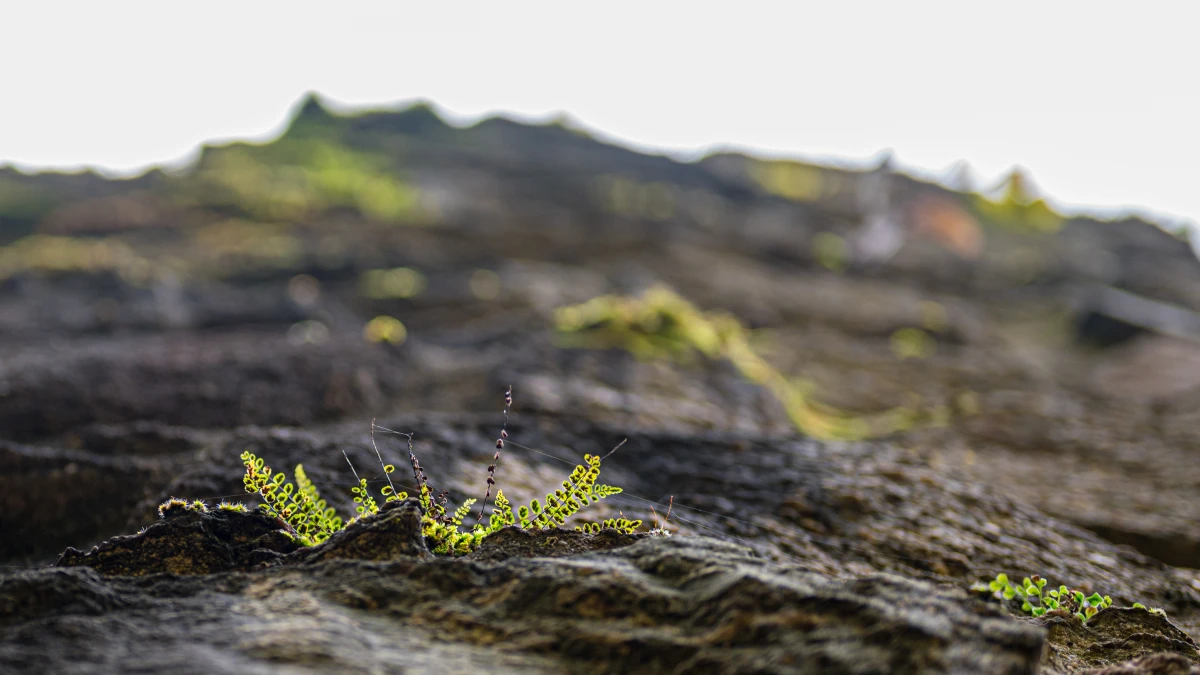
The paradox: the surface looks drenched, water shoots out the bottom—and the plant still wilts by tomorrow. That’s hydrophobic potting mix (common when peat-based soil is bone-dry). Water slips down the pot wall instead of soaking in, so only a sliver of the root zone gets wet.
Rehydrate properly:
- Bottom-water for 60–120 minutes: set the pot in a basin with 2–5 cm of water and let capillarity pull moisture into the root ball.
- For small pots, dunk and soak until bubbles stop.
- For large containers, a slow trickle on the surface for several minutes helps re-wet fibers evenly (repeat as needed).
- Once rehydrated, resume normal watering and avoid letting the mix reach “crisp-dry” again. UC Agriculture & Natural Resources outlines these four re-wetting methods specifically for hydrophobic media.
A faster way to know when to water: learn pot weight. Lift the plant right after a thorough watering (that’s your “heavy” reference). Lift again daily until it feels noticeably light—then water. This is simple, cheap, and more reliable than calendar schedules. University of Minnesota educators teach the same “feel the mix + lift the pot” habit.
Prevent repeat episodes: keep an eye on light (more light = faster drying), consider mixing in perlite or pumice at the next repot to improve uniform wetting, and avoid long gaps that bake the potting mix bone-dry.
Not Enough Light
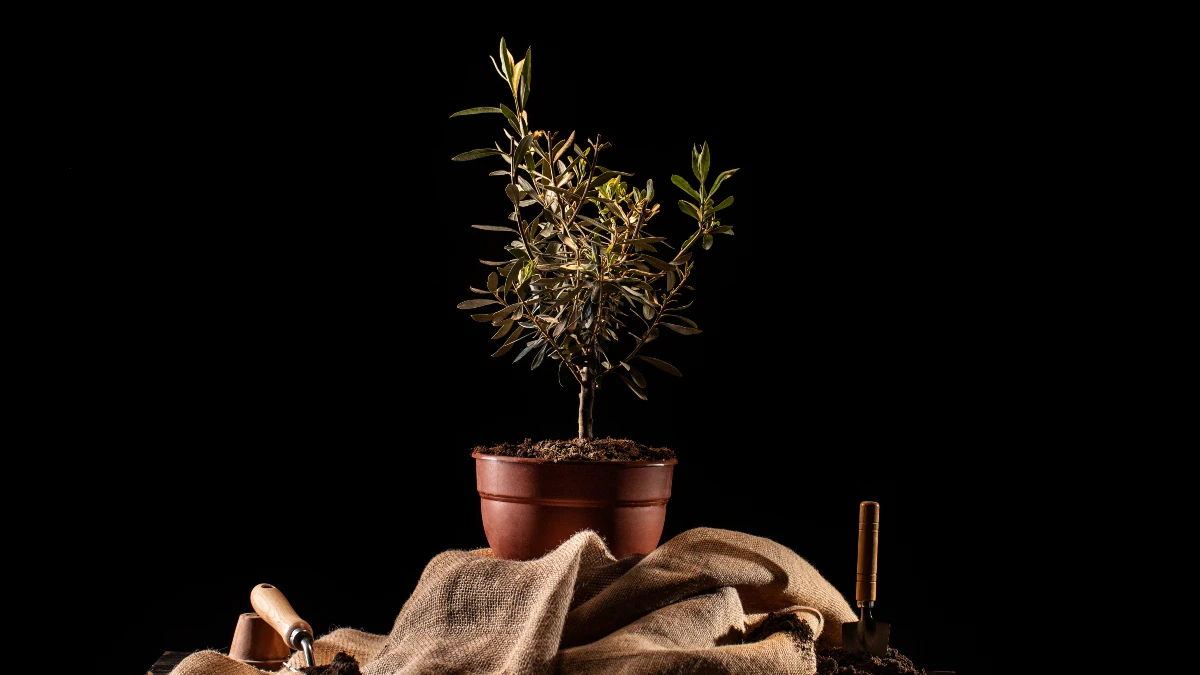
Know your numbers: indoors, useful light is scarce compared to outdoors. As a working baseline from the University of Maryland Extension: low light = 25–100 fc, medium = 100–500 fc, high = 500–1000 fc. South-facing windows often deliver the highest readings; north windows are typically low. Measure with a phone app or meter at the leaf level at midday.
Why light and water are linked: in lower light, plants photosynthesize less and use less water—so the same watering routine that worked by a bright window can overwater the same plant across the room. That’s why “mysterious rot” often follows a move to dimmer spots. Adjust watering frequency to match the light you actually have.
When to add grow lights: if you can’t hit the fc targets for your plant list, supplement. Iowa State University Extension frames light in quality, intensity, and duration, which together form the Daily Light Integral (DLI)—the total photons a plant gets per day. For foliage plants, a modest DLI (e.g., 6–10 mol·m⁻²·day⁻¹) paired with consistent timing often transforms growth. Choose fixtures that publish PPFD at realistic hanging heights and put them on a timer (12–14 hours for many foliage species).
Avoid scorch while chasing brightness: many houseplants love bright, indirect light—strong ambient light without hours of harsh midday sun. Filter south/west windows with sheer curtains or pull plants back 0.5–1.5 m to soften intensity, then re-measure. Keep in mind: more light generally means faster drying; reassess your watering cadence after any light change.
Compacted or Wrong Potting Mix
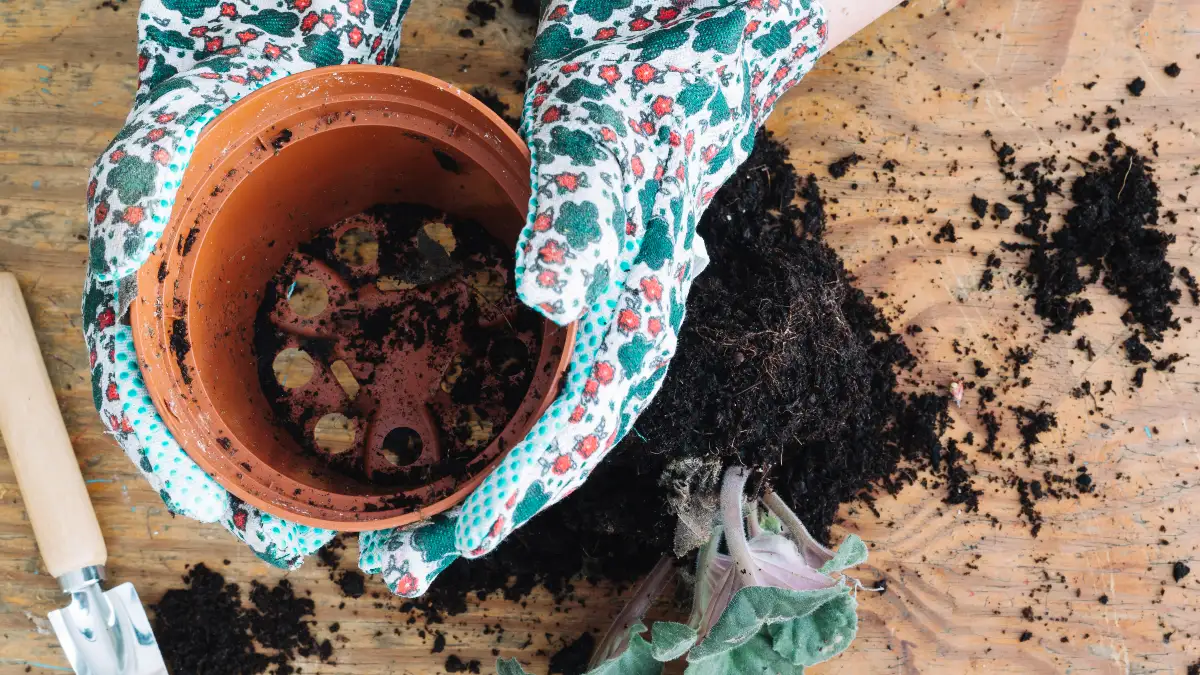
Air in the root zone is non-negotiable. Over time, organic potting mixes break down and fine particles settle. If you also press or tamp mix during potting, you squeeze out the air-filled pores roots need to breathe—making overwatering damage more likely. Iowa State University Extension explicitly advises not tapping or pressing media because it packs the mix and reduces air-filled pores.
How to build (and maintain) a well-draining mix: for most tropical foliage, start with a quality peat- or coco-based potting mix and amend 10–30% perlite or pumice for extra aeration, especially in low-light homes. Repot every 12–24 months before the mix collapses. If a plant sits wet for days even with drainage holes, upgrade aeration at the next repot rather than “watering less forever.”
Skip the gravel myth: adding rocks at the bottom does not improve drainage; it creates a perched water table that moves saturation up toward roots and reduces usable root volume. This has been demonstrated repeatedly in extension literature and summarized by Washington State University horticulturist Linda Chalker-Scott. If you want to keep soil from escaping, use a small mesh or coffee filter over the holes—never a gravel layer.
Action check: when potting, fill loosely, level the surface (don’t tamp), water thoroughly to settle, and let gravity and capillarity do their job. Pair this with sensible container sizing and you’ll solve a huge chunk of “mystery decline” cases tied to suffocated roots.
Wrong Pot Size or Root-Bound: Time to Repot (Correctly)
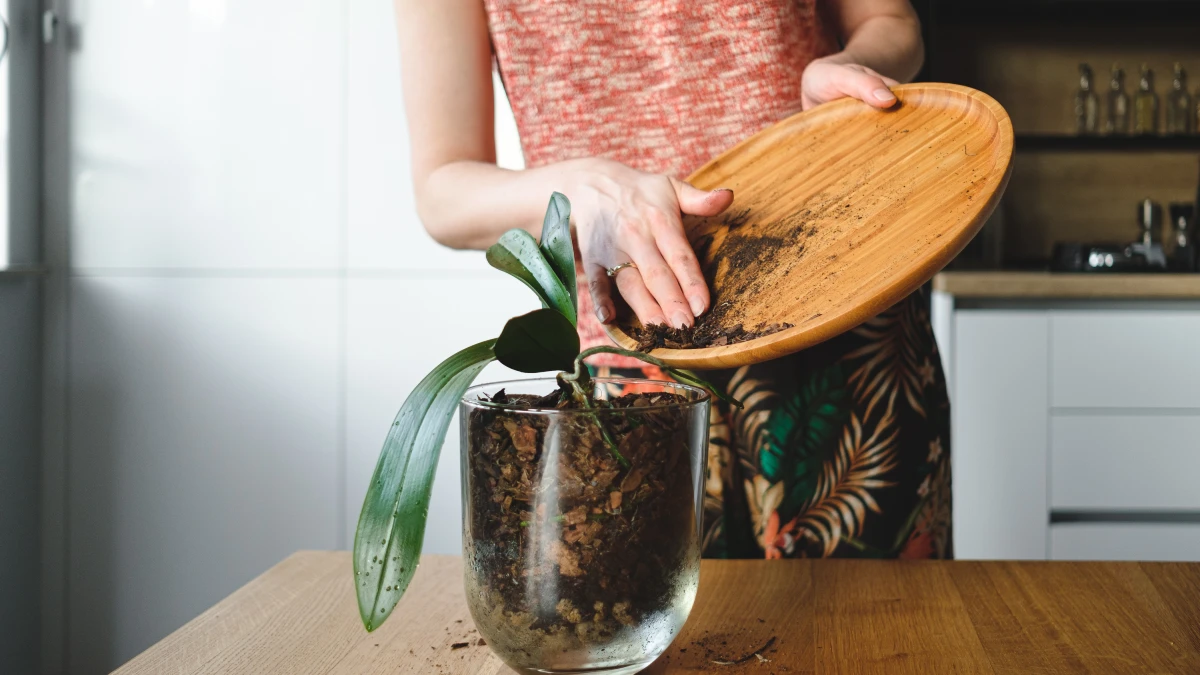
Spot the signs fast: soil that dries very quickly, slowed or stunted growth, and roots circling the outside of the root ball or poking from drainage holes. Penn State Extension notes spring/active growth is the safest window for repotting houseplants so new roots can colonize fresh mix quickly.
How to repot, step by step: slip the plant from its pot and assess. If it’s root bound, Illinois Extension advises cutting or teasing circling roots so they’ll re-grow outward instead of continuing to strangle the plant. Make four shallow vertical slices (about 1–2 cm deep) around the sides of the root mass, then finger-comb the outer roots. Replace any crusted top layer if salts built up.
Right-size the container: go 2–5 cm (1–2 in) wider—snug is safer than jumping multiple sizes, which leaves wet, unused media around the roots. The University of Arkansas System Division of Agriculture adds: break up badly bound roots and remove dead, sloughing tissue before replanting.
Refresh and reassemble: use a fresh, well-draining potting mix. Arizona Cooperative Extension’s indoor plant guides recommend roughing up the root ball, setting the plant so it sits at the same depth, backfilling gently (don’t tamp hard), then watering once to settle. Always choose containers with drainage holes; sanitize used pots with soap and hot water before re-use.
Temperature Swings & Drafts: Plants Hate Extremes
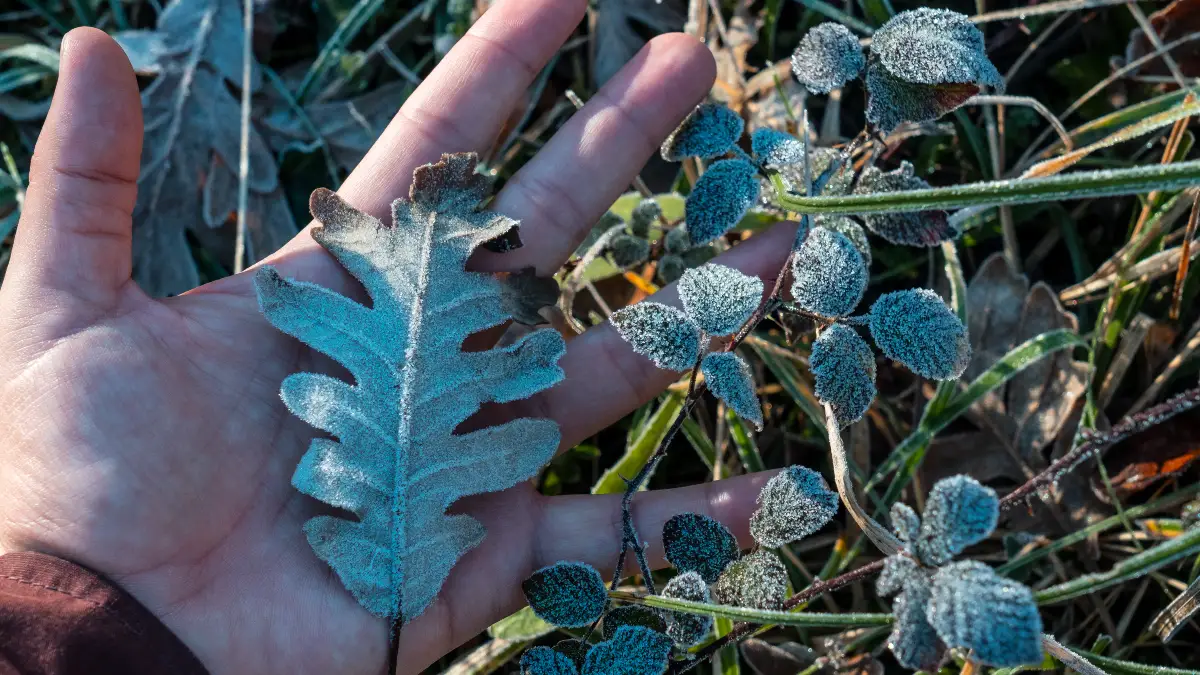
Aim for steady: most foliage houseplants are happiest around 65–75°F (18–24°C) by day, with nights roughly 10°F (5–6°C) lower. The University of Maryland Extension emphasizes that growth stalls and leaves drop when temps run too low or swing too often.
Control microclimates: keep plants away from HVAC vents, radiators, cold windows, and door drafts. Multiple Cornell Cooperative Extension pages echo this: warm blasts and cold leaks stress foliage and desiccate potting mix unevenly. If a plant touches a winter window, move it a few inches inward or buffer with a sheer curtain.
Measure, don’t guess: a $10–$20 digital thermo-hygrometer at leaf height shows both temperature and RH where it matters—the canopy. Log readings over a week; if nights drop below ~60°F (15–16°C) for warmth-loving species, adjust placement. This one habit prevents a surprising amount of “mystery decline” and is a core step in how to revive a dying plant once you’ve fixed water and light.
Low Humidity (Especially in Heated Homes)
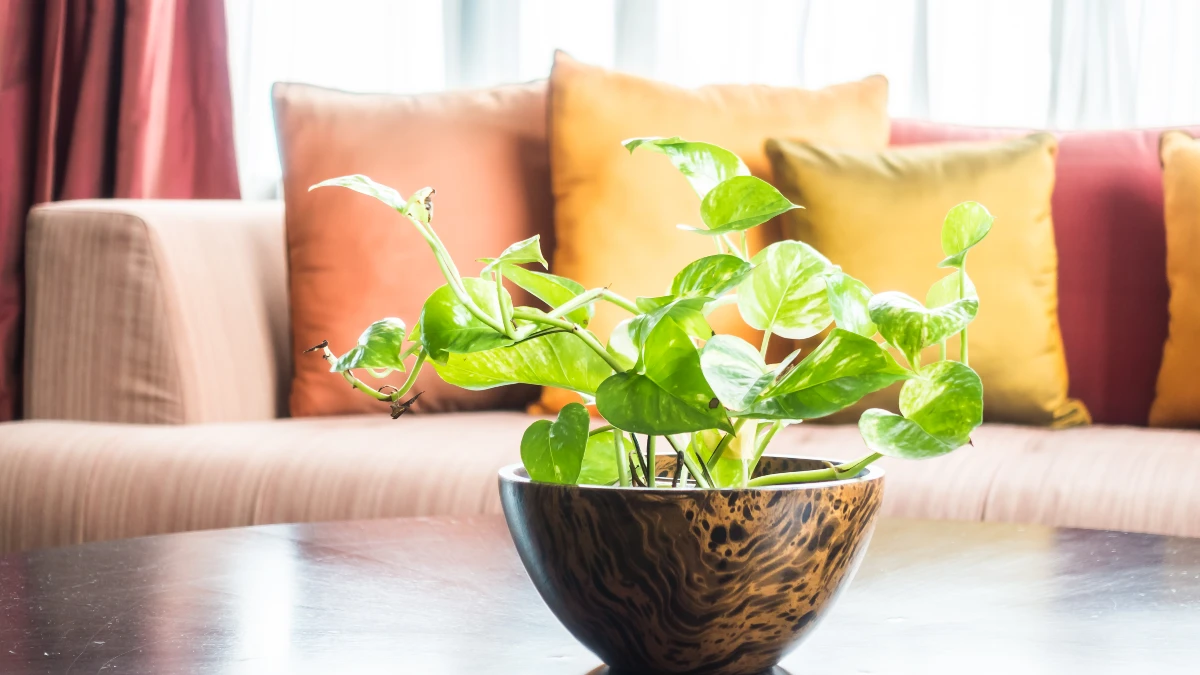
Know your target: University of New Hampshire Extension (2025) recommends 40–60% relative humidity for most non-succulent houseplants; many tropicals thrive even higher. In winter heating season, indoor RH often drops below 30%, Penn State Extension warns—exactly when brown leaf tips and edges appear on sensitive plants.
Why it matters: low RH accelerates transpiration, pulling water faster than roots can replace it—so leaves crisp even when the soil isn’t bone-dry. University of Nebraska–Lincoln guidance aligns with a 40–60% RH comfort band and flags leaf drying/curling as classic symptoms below that range.
Practical fixes that work:
- Group plants to create a shared humidity zone.
- Set pots on pebble trays with water below the pot’s base (never touching the pot).
- Run a small room humidifier on a timer near the collection.
- Verify changes with your hygrometer at leaf height; aim to keep readings above 40% for most foliage species. Cornell Cooperative Extension also recommends humidifiers and pebble trays as reliable, low-effort options.
Skip the mirage: light misting gives a brief bump that disappears in minutes; it doesn’t maintain the steady RH plants need. Focus on sustained humidity near the plant, not temporary sprays. Revisit watering, too—higher RH slightly slows drying, so cadence may change as you raise humidity.
Fertilizer Mistakes & Salt Buildup: Tips for Turning Brown
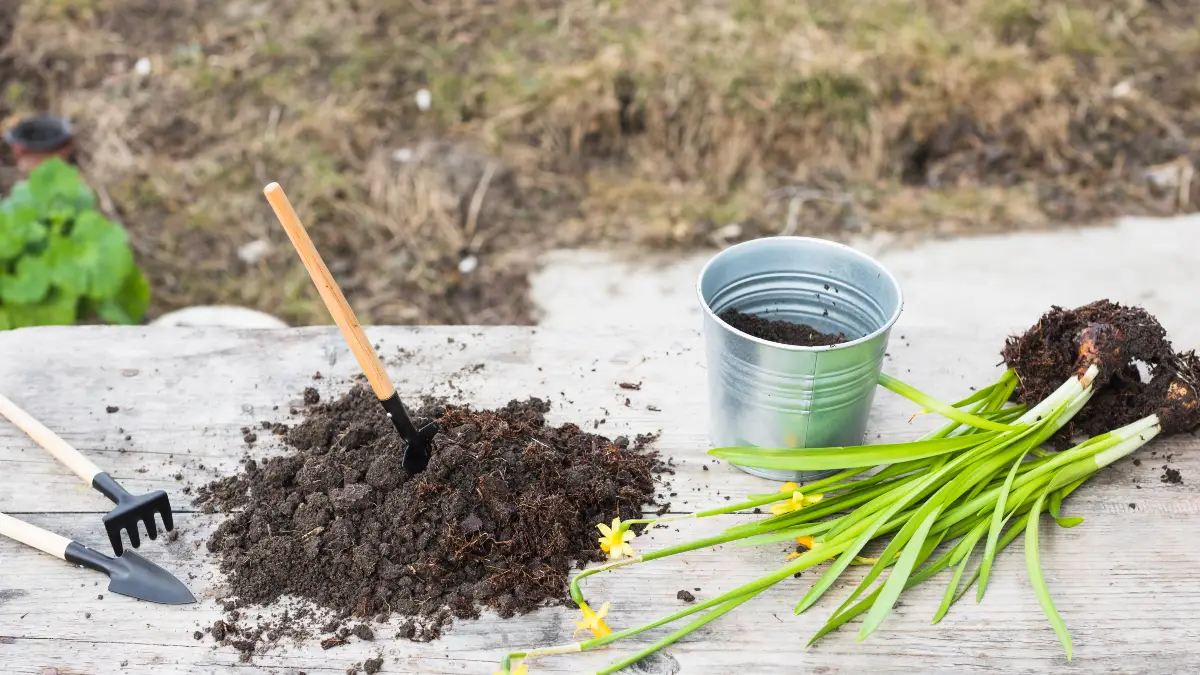
The pattern: brown leaf tips, a white crust on the soil or pot rim, and slowed growth—classic signs of salt accumulation from frequent feeding or from hard/softened water. University of Maryland Extension’s guidance is clear: leach salts every 4–6 months by running three times the pot’s volume of plain water through the mix and letting it drain fully. This simple reset prevents tip burn on sensitive species.
Why salts build up: fertilizers leave ions behind; softened water can add sodium; letting pots sit in saucers concentrates salts as water evaporates. The University of Georgia College of Agricultural & Environmental Sciences advises discarding saucer water and periodically leaching, which markedly reduces salt stress.
Dial in the numbers: to keep media chemistry in the healthy zone, Penn State Extension (2025) cites greenhouse saturated-paste targets of EC 1.5–3.0 mmhos/cm and pH 5.5–6.5 for quality soilless mixes. If you use an EC meter, sample leachate consistently (same time since last watering/fertilizing) for meaningful trends. For one-off diagnostics, consider a greenhouse media lab test (Penn State’s Ag Analytical Services offers this) to check EC, pH, and nutrients.
Fix it now (15-minute protocol):
- Flush with 3× pot volume of water; empty saucer immediately.
- Pause fertilizer 2–4 weeks while new growth resumes.
- Resume at half-label rate during active growth and skip feeding in low light/winter unless you see active growth.
- Rotate water sources (tap, rain, filtered) if your tap is very hard or softened; leach more often if you must use softened water.
- Re-check EC monthly if you’re troubleshooting recurrent fertilizer burn.
Pests & Diseases: Treat Early, Treat Thoroughly
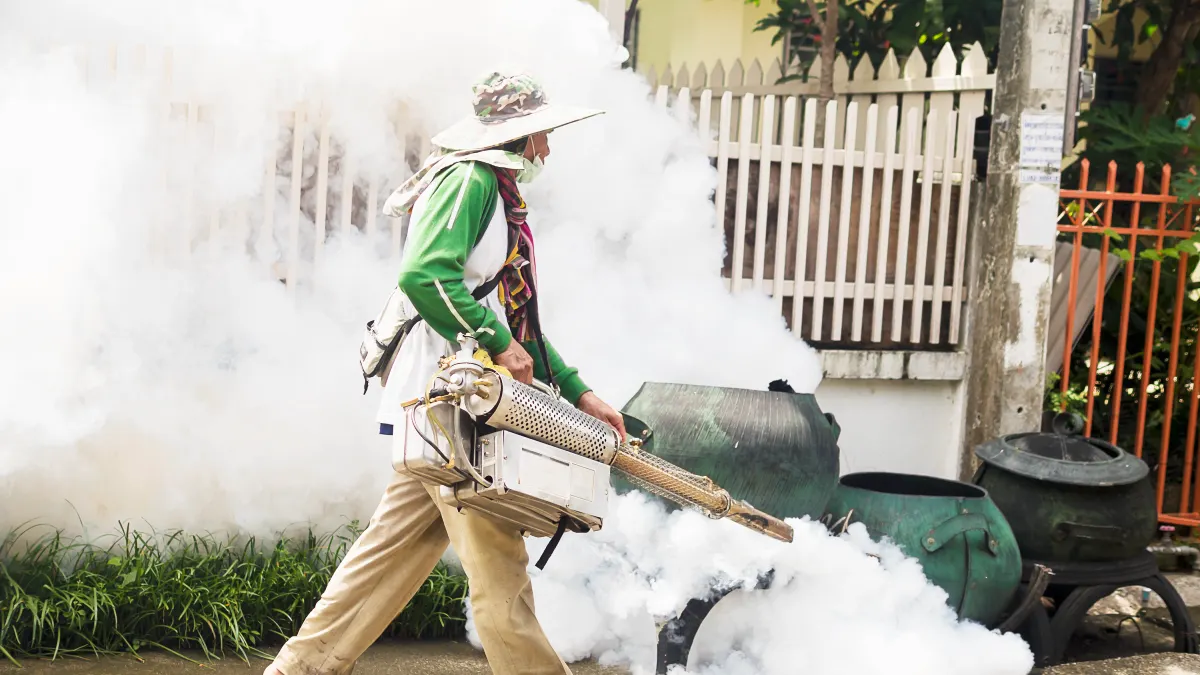
Start with prevention: quarantine any new plant for 1–2 weeks, check leaf undersides with a hand lens, and keep foliage clean—dust slows photosynthesis and shelters pests (University of Minnesota Extension).
Spider mites on houseplants. These thrive in warm, dry air and multiply fast. Do the white-paper tap test: hold paper under a suspect leaf, tap, and watch for moving specks (UMN; SDSU Extension). If you confirm mites, isolate, then wash the plant—sink or shower for small plants; wipe larger leaves with a damp cloth. Follow with horticultural oil or insecticidal soap sprayed to glisten—especially leaf undersides—and repeat weekly for 3–4 cycles to catch new hatchlings. Colorado State University Extension notes oils are “probably the most effective spray” for twospotted spider mite; soaps can help but have limits. Treat nearby hosts at the same time; discard severely infested plants if needed.
Fungus gnats. Adults are mostly a nuisance, but their larvae feed in moist media. Let the top 1–2 cm of soil dry between waterings, use yellow sticky traps to catch adults, and drench the pot with BTI (Bacillus thuringiensis subsp. israelensis) to kill larvae. UMN explicitly recommends BTI for houseplants; CSU lists Gnatrol/Knock-Out Gnats as examples. OSU’s Ask Extension also recommends sticky traps for monitoring and reduction.
General rules that raise your success rate:
- Fix the environment first (light, watering, humidity)—stressed plants attract pests (UMN).
- Spot-treat early, then re-treat on schedule (most soaps/oils have no residual).
- Label literacy: use only products labeled for indoor plants; test a leaf first; never spray moisture-stressed plants. (UMN/CSU).
Water Quality Notes (optional call-out)
Some species are fluoride-sensitive—notably Dracaena and spider plant. Persistent brown tips may improve with rain or distilled water, a slightly higher media pH (≈6.0–6.5), and regular leaching to flush salts (Michigan State University Extension; NC State Extension; Penn State). Many common houseplants still tolerate typical tap water—especially if you periodically flush the potting mix (horticulture experts interviewed by Better Homes & Gardens).
Conclusion
Most plant problems boil down to three levers: light, water with drainage, and environment (steady temp/RH). Add right-sized repotting and fast, thorough pest action, and you’ll solve 90% of issues before they snowball. Here’s your 5-minute audit: measure light by each window, confirm drainage holes and empty saucers, log temp/RH with a small thermo-hygrometer, inspect leaves (including the white-paper tap test), and schedule a quarterly leach and seasonal repot check. Do that loop, and the mystery of why your plants are dying turns into a predictable care routine you can repeat for every new plant.

